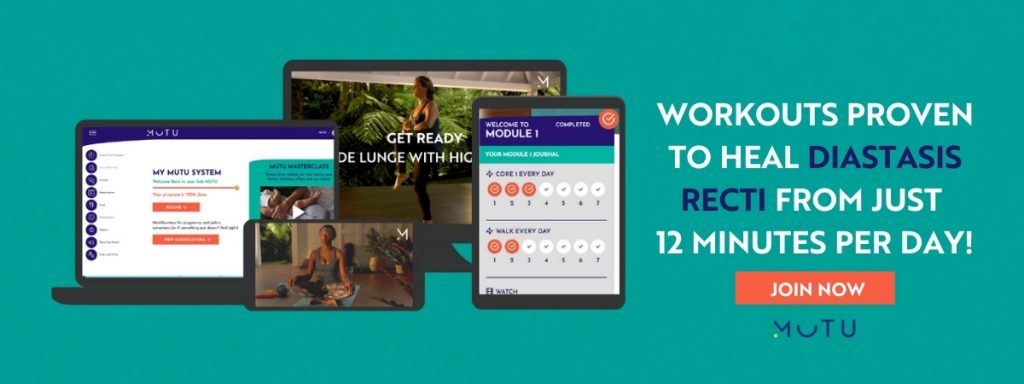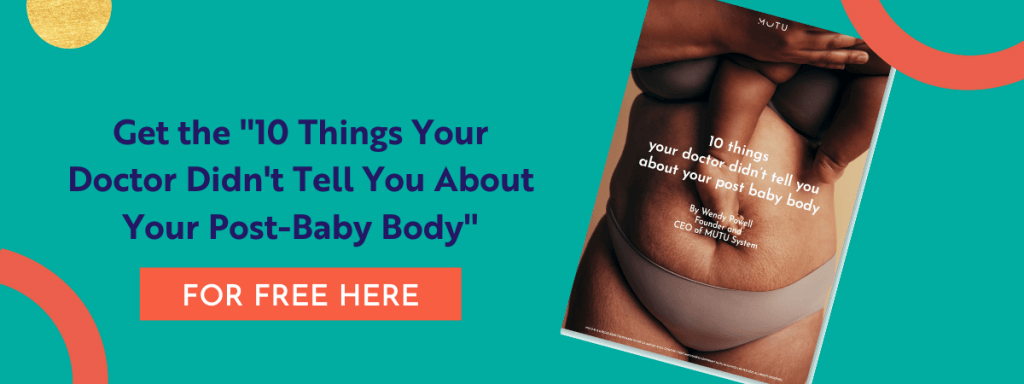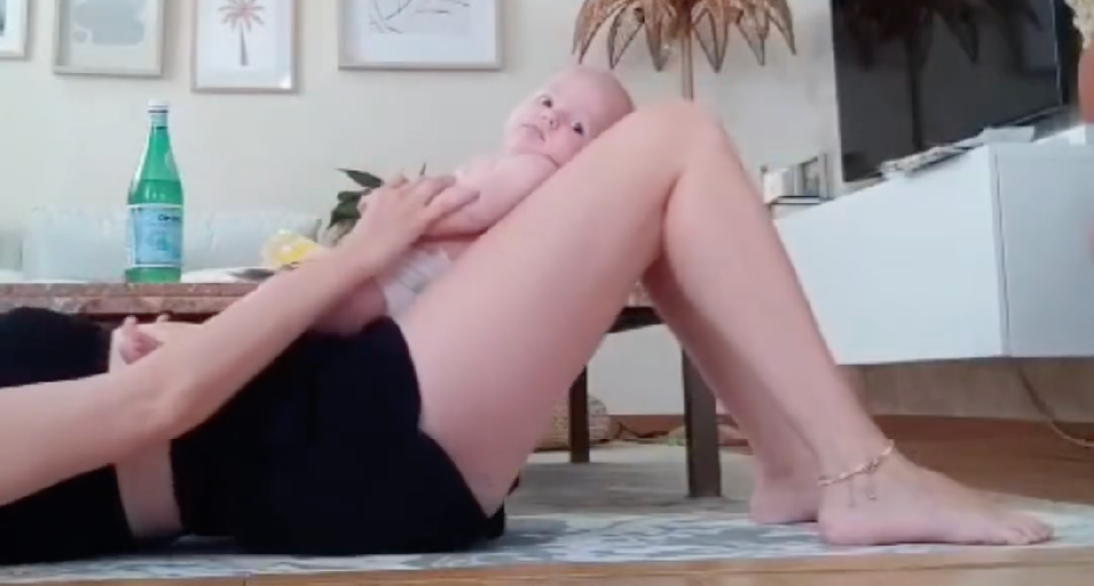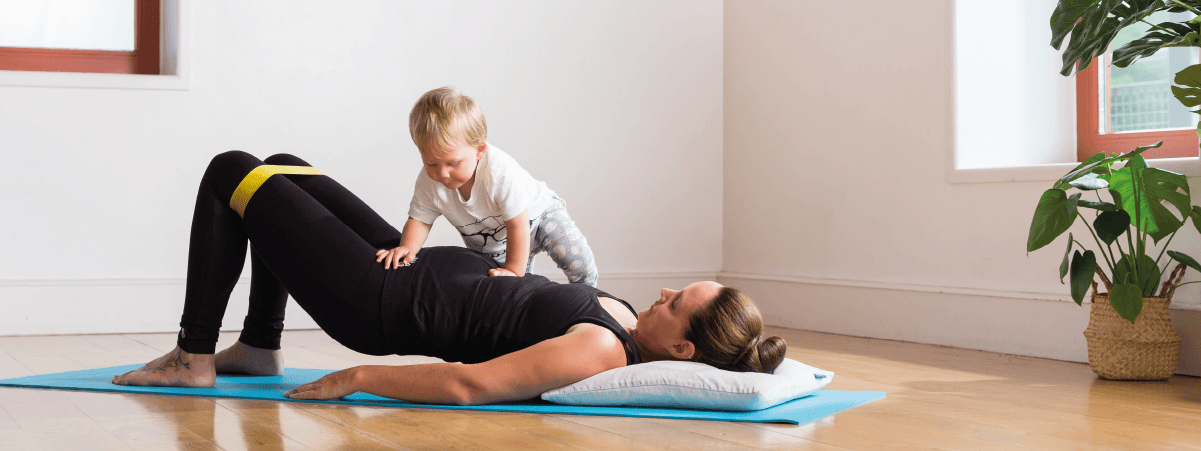
Did you know that the name ‘MUTU’ came from ‘mummy tummy’? (Brit version of mommy tummy). We have lots of affectionate names for our middle after having babies. Mommy belly, baby belly, jelly belly, mommy pouch, pooch, muffin top… the list goes on. Whatever you call yours, name it with love. That tummy did an amazing thing and deserves respect.
Here’s some top-line truth bombs, with links to more detail where you want it.
Mommy tummy fact 1: Sit-Ups won’t make it go away
A tummy that still looks pregnant some months after its not, is often related to diastasis recti or abdominal separation. You’ll find a ton of diastasis recti information in our resources section.
Sit-ups or crunches can increase the pressure inside your abdomen pushing out on the diastasis gap and possibly make it worse. This same pressure pushes down on your pelvic floor too (not a direction your want your pelvic organs descending. Detailed guidance on crunches and sits ups when you have diastasis recti here. But for the moment, avoid these moves if you have a mummy tummy.

Fact 2: Sucking it in won’t help, and isn’t ‘engaging your core’
We hear all the time ‘engage your core’. But often don’t really know what that exactly means. Is it sucking in your tummy? Pulling your abs in hard? Holding your breath?
Sucking in your stomach to make it appear flatter is a habit you probably don’t even know you’re doing. It’s really common and ingrained for many of us. But contracting any muscle all the time won’t make it stronger. Just like your pelvic floor, your abs muscles need to release and lengthen, as well as contract and shorten, in order to be functional and strong. So try to let that fabulous tummy of yours just… breathe. And learn how to engage your core effectively here.
Mommy Tummy fact 3: Your abs and your pelvic floor are ‘connected’
Whether you had a c-section or vaginal birth, however your birth went, and however long ago it was, your pelvic floor is part of your core rehab.
Your ‘core’ is not just your abs. It’s made up of all your ab muscles including the deep transverse abdominus, your diaphragm, the multifidus muscles of the spine and your pelvic floor. They’re all part of the same integrated system. So your mommy tummy is affected by the function of all these muscles and structures.

Fact 4: You likely do NOT need surgery to correct a diastasis
In most cases surgery is not necessary to repair or narrow a diastasis recti separation. Where foundational core rehabilitation (like MUTU) or pelvic physiotherapy cannot restore function and tension to the connective tissues at the front of your abs, it may be. But this is rare, and should be assessed and advised by a Pelvic Health Physio only after restorative work has been tried. More on diastasis recti surgery here.
Fact 5: Diastasis Recti is not the only reason for your mommy tummy
Diastasis recti gets blamed for a lot. But it’s really not all about the gap. Nutrition, tummy fat, digestive issues, posture, breathing and the way you move all affect how our stomach appears. More on alignment and how it affects your tummy here, and on understanding the fat around your middle here.









Hi, how do you know if you have a hernia or just diastasis recti?
Hi, Hernia, prolapse and diastasis recti are all results of excessive intra-abdominal pressure. This means that your abdominal and pelvic cavity cannot withstand the pressure within, resulting in pushing away, out or down at the weakest points – such as your pelvic floor or the mid-line of your abdominal muscles. By adjusting your alignment to allow your body to support itself more effectively and your muscles to work optimally, along with learning to connect with and engage the deep muscles of your core and pelvic floor… you can enable your core to become stronger and more stable. Read more on Hernia here.
Hi I had a tummy tuck repairing diastis rectify also, can I still keep it strengthen my tummy with your program? Just to keep it strong n healthy?
Hi I had a tummy tuck repairing diastis rectify also, can I still keep it strengthen my tummy with your program? Just to keep it strong n healthy?
If you have a hernia can you still see results in flatting your stomach? Do you still need to do abdominal exercises?
If you have a hernia can you still see results in flatting your stomach? Do you still need to do abdominal exercises?
Hey this is a great article and hopefully people will listen to this as all the crunches and sit ups in the world wont help but only cause you huge back pain.
You need to build your core muscles deep inside you and there is no exercise more effective than doing the plank, this is an isometric exercise so is done statically and really helps to work core strength and pull in your stomach by increasing the strength of your deep abdominals.
Anyone not knowing the plank needs to just google “the plank” and you will see many examples, nothing beats it.
Hey this is a great article and hopefully people will listen to this as all the crunches and sit ups in the world wont help but only cause you huge back pain.
You need to build your core muscles deep inside you and there is no exercise more effective than doing the plank, this is an isometric exercise so is done statically and really helps to work core strength and pull in your stomach by increasing the strength of your deep abdominals.
Anyone not knowing the plank needs to just google “the plank” and you will see many examples, nothing beats it.